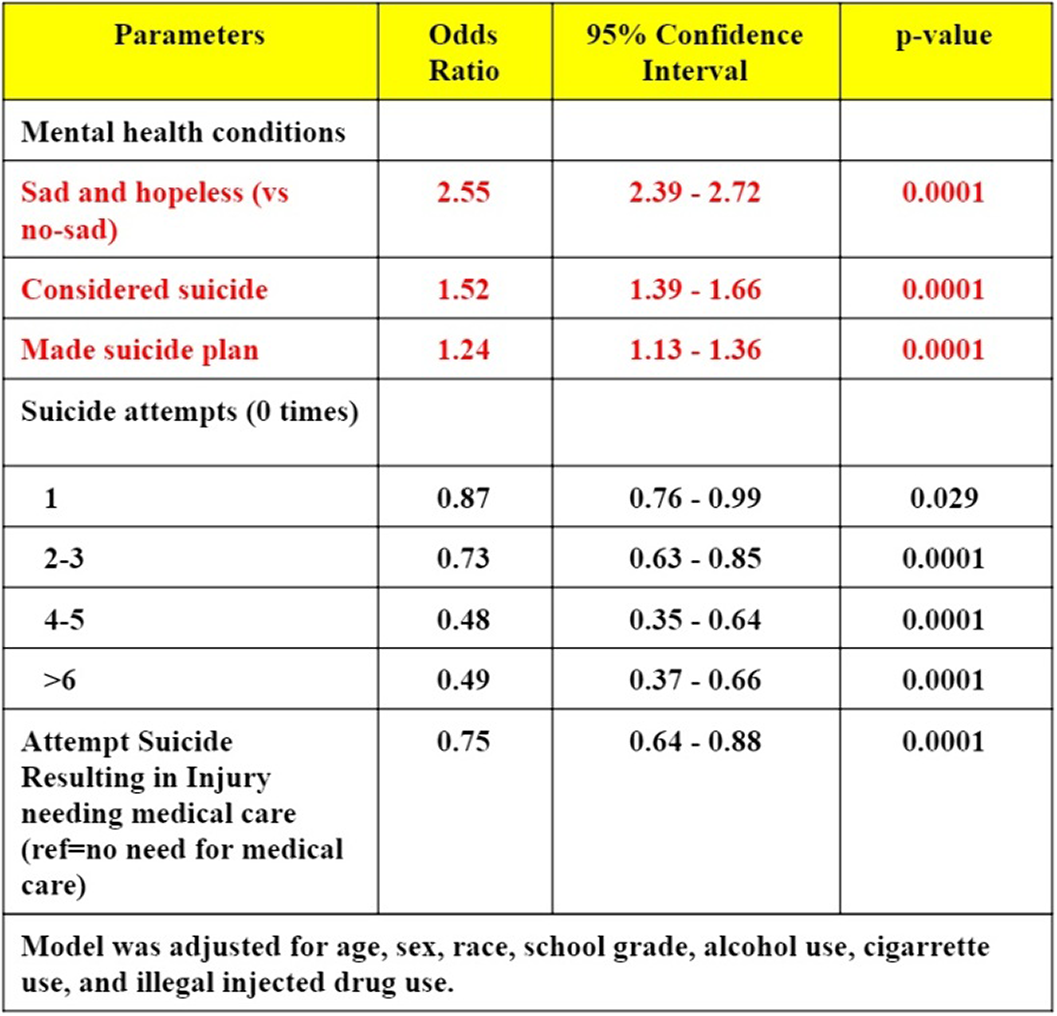140 results
Effectiveness of a WHO self-help psychological intervention to alleviate stress among healthcare workers in the context of COVID-19 in China: a randomised controlled trial
-
- Journal:
- Epidemiology and Psychiatric Sciences / Volume 33 / 2024
- Published online by Cambridge University Press:
- 07 March 2024, e11
-
- Article
-
- You have access
- Open access
- HTML
- Export citation
Novel recruitment approaches and operational results for a statewide population Cohort for cancer research: The Healthy Oregon Project
-
- Journal:
- Journal of Clinical and Translational Science / Volume 8 / Issue 1 / 2024
- Published online by Cambridge University Press:
- 19 January 2024, e32
-
- Article
-
- You have access
- Open access
- HTML
- Export citation
Competition among the two-plasmon decay of backscattered light, filamentation of the electron-plasma wave and side stimulated Raman scattering
-
- Journal:
- High Power Laser Science and Engineering / Volume 11 / 2023
- Published online by Cambridge University Press:
- 29 August 2023, e76
-
- Article
-
- You have access
- Open access
- HTML
- Export citation
Changes in soil hydraulic properties due to organic amendment
-
- Journal:
- Experimental Results / Volume 3 / 2022
- Published online by Cambridge University Press:
- 28 November 2022, e27
-
- Article
-
- You have access
- Open access
- HTML
- Export citation
GaLactic and Extragalactic All-sky Murchison Widefield Array survey eXtended (GLEAM-X) I: Survey description and initial data release
- Part of
-
- Journal:
- Publications of the Astronomical Society of Australia / Volume 39 / 2022
- Published online by Cambridge University Press:
- 23 August 2022, e035
-
- Article
-
- You have access
- Open access
- HTML
- Export citation
The Changing Profile of Tenure-Track Faculty in Archaeology
-
- Journal:
- Advances in Archaeological Practice / Volume 10 / Issue 4 / November 2022
- Published online by Cambridge University Press:
- 05 May 2022, pp. 371-381
-
- Article
-
- You have access
- Open access
- HTML
- Export citation
Spatial epidemiological characteristics and exponential smoothing model application of tuberculosis in Qinghai Plateau, China
-
- Journal:
- Epidemiology & Infection / Volume 150 / 2022
- Published online by Cambridge University Press:
- 12 January 2022, e37
-
- Article
-
- You have access
- Open access
- HTML
- Export citation
Role of saliva use during masturbation in the transmission of Chlamydia trachomatis in men who have sex with men
-
- Journal:
- Epidemiology & Infection / Volume 149 / 2021
- Published online by Cambridge University Press:
- 09 September 2021, e216
-
- Article
-
- You have access
- Open access
- HTML
- Export citation
Mood and suicidality amongst cyberbullied adolescents- a cross-sectional study from youth risk behavior survey
-
- Journal:
- European Psychiatry / Volume 64 / Issue S1 / April 2021
- Published online by Cambridge University Press:
- 13 August 2021, pp. S85-S86
-
- Article
-
- You have access
- Open access
- Export citation
Methane emissions from cattle manure during short-term storage with and without a plastic cover in different seasons
-
- Journal:
- The Journal of Agricultural Science / Volume 159 / Issue 3-4 / April 2021
- Published online by Cambridge University Press:
- 10 June 2021, pp. 159-166
-
- Article
- Export citation
Impact of in vitro embryo culture and transfer on blood pressure regulation in the adolescent lamb
-
- Journal:
- Journal of Developmental Origins of Health and Disease / Volume 12 / Issue 5 / October 2021
- Published online by Cambridge University Press:
- 13 November 2020, pp. 731-737
-
- Article
- Export citation
Neutron Star Extreme Matter Observatory: A kilohertz-band gravitational-wave detector in the global network
- Part of
-
- Journal:
- Publications of the Astronomical Society of Australia / Volume 37 / 2020
- Published online by Cambridge University Press:
- 05 November 2020, e047
-
- Article
-
- You have access
- HTML
- Export citation
Epidemiological characteristics and spatial−temporal analysis of COVID-19 in Shandong Province, China
-
- Journal:
- Epidemiology & Infection / Volume 148 / 2020
- Published online by Cambridge University Press:
- 06 July 2020, e141
-
- Article
-
- You have access
- Open access
- HTML
- Export citation
Selective amplification of the chirped attosecond pulses produced from relativistic electron mirrors
-
- Journal:
- Laser and Particle Beams / Volume 38 / Issue 2 / June 2020
- Published online by Cambridge University Press:
- 03 July 2020, pp. 165-168
-
- Article
-
- You have access
- HTML
- Export citation
Fundamental physics with the Square Kilometre Array
- Part of
-
- Journal:
- Publications of the Astronomical Society of Australia / Volume 37 / 2020
- Published online by Cambridge University Press:
- 27 January 2020, e002
-
- Article
-
- You have access
- HTML
- Export citation
The role of DNA damage as a therapeutic target in autosomal dominant polycystic kidney disease
-
- Journal:
- Expert Reviews in Molecular Medicine / Volume 21 / 2019
- Published online by Cambridge University Press:
- 26 November 2019, e6
-
- Article
- Export citation













